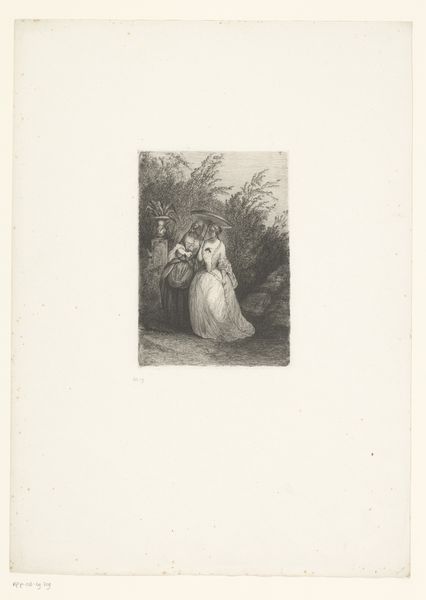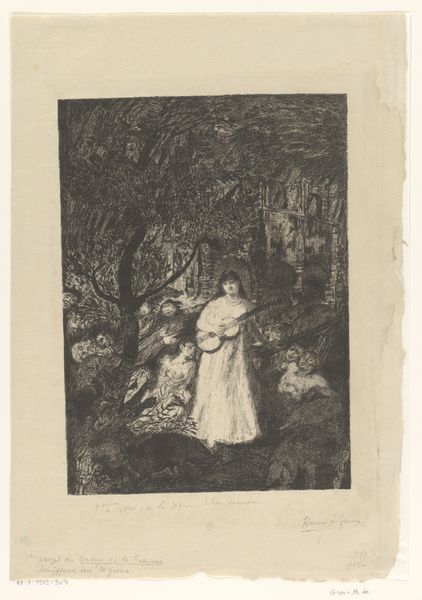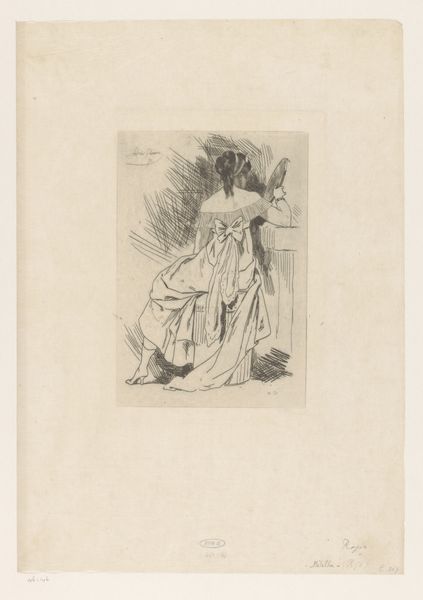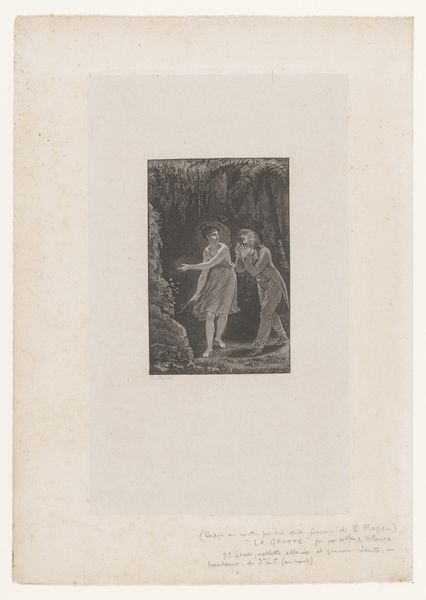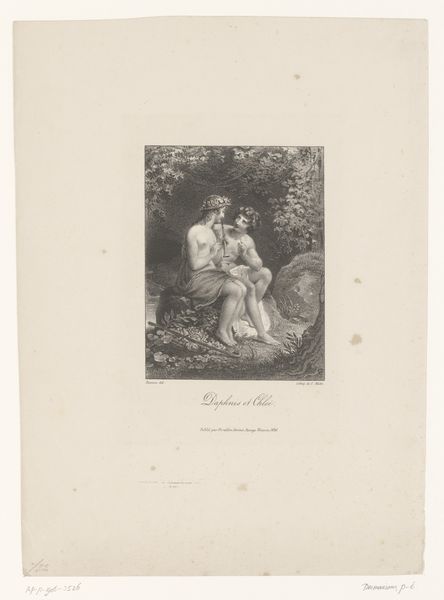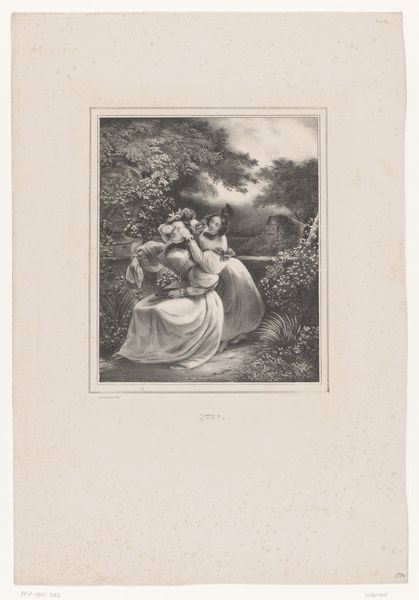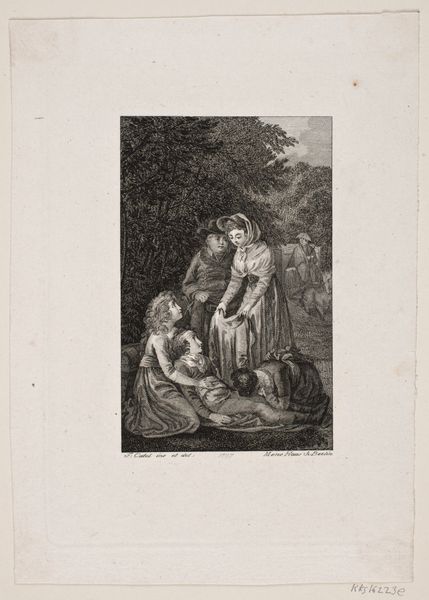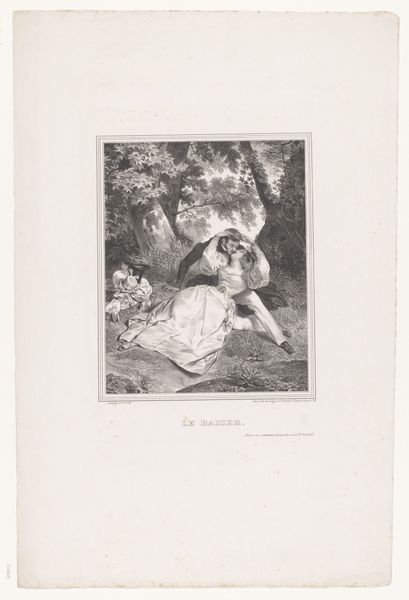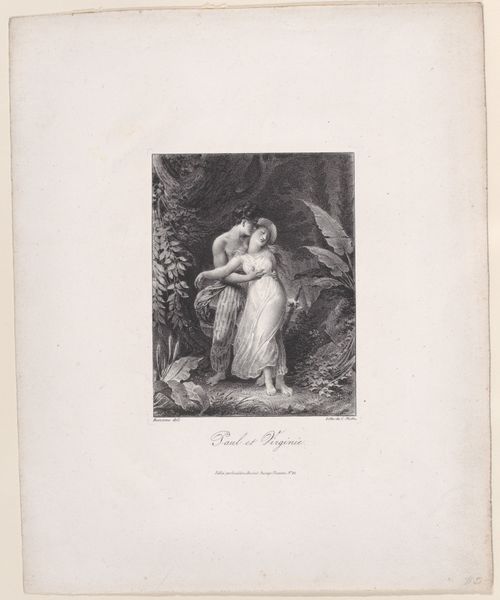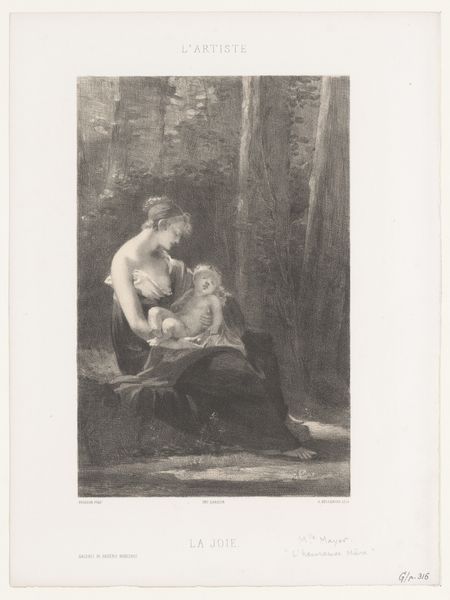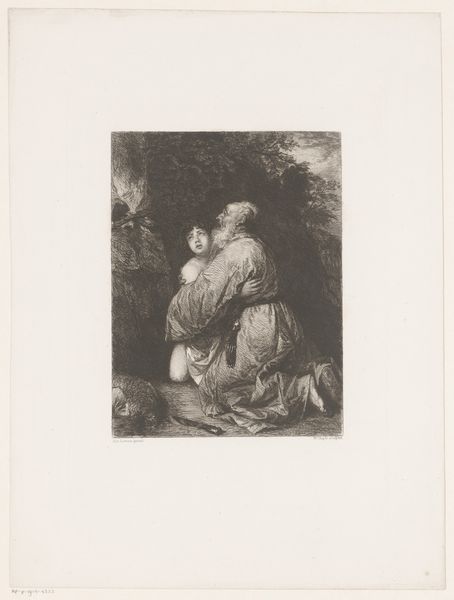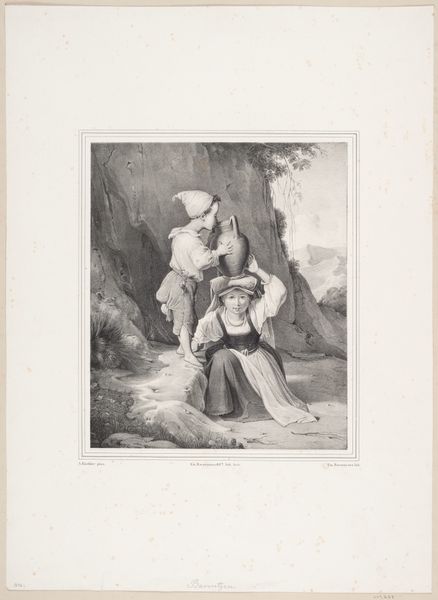
Dimensions: height 355 mm, width 275 mm
Copyright: Rijks Museum: Open Domain
Curator: So, here we have "Woman by a Brook" by Hendrik Adriaan Christiaan Dekker, dating somewhere between 1846 and 1863. It's an ink drawing on paper. Editor: Mmm, a melancholy feeling washes over me immediately. It's quite a grayscale symphony; the tones remind me of old daguerreotypes. What strikes you first? Curator: The figure's pose, definitely. It echoes the classical "Venus Pudica"—a gesture of modesty—yet situated within a wild, Romantic landscape. She's both vulnerable and somehow mythic. The landscape is equally significant. What kind of messages do you find there? Editor: Well, it seems like a world both enveloping and alienating. The nude figure juxtaposed against this deep, shadowy forest plays on themes of purity, natural beauty, perhaps a fallen innocence. She is on the border of civilized existence in some ways. Does the stream serve as a purifying element? Curator: It very well could. Water is, across cultures, one of the most recognizable signs for purity and renewal, as is her nudity. She's poised at the edge of a transformative state, almost shedding a previous identity as she steps into something unknown. There's an odd mixture of romanticizing her figure, but making her deeply human. It's fascinating how those concepts come into contact. Editor: Yes! There's that hat and dress, discarded on the riverbank—remnants of her former life almost floating away. What if the dark woods aren't threatening at all, but rather invite a liberating act of self-discovery? That thought feels nice and much less bleak than what my initial reaction was. Curator: It certainly presents multiple interpretations! That discarded clothing is a physical representation of discarding societal norms. It speaks to an enduring tension between nature and culture, and that persistent longing to find something untainted, or an existence prior to our memories. What would you say, coming away from this piece, the central essence you perceive is? Editor: For me, it ends up being about the tension and ultimate freedom found in the transition. Like many good pieces of art, its truth and message reside in the in-between. It initially struck me as sorrowful, but it transformed into something else entirely. Curator: I couldn't agree more. The magic of these Romantic pieces lives in the tension between our desire for natural existence, and the cultural impositions that forever surround us.
Comments
No comments
Be the first to comment and join the conversation on the ultimate creative platform.
